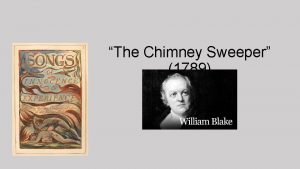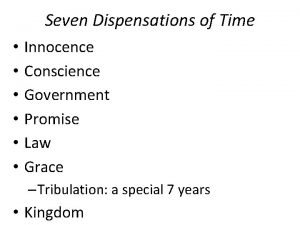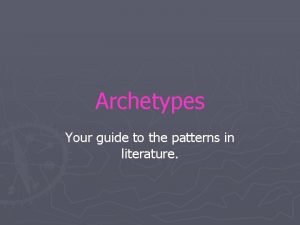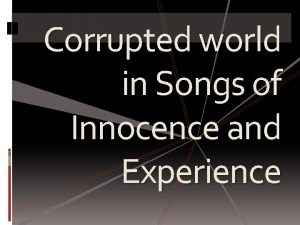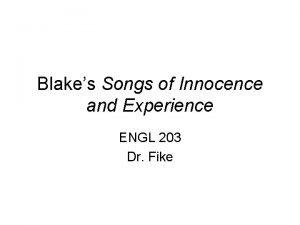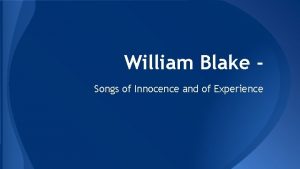Songs of Innocence and Experience Study questions Millennium





- Slides: 5

Songs of Innocence and Experience Study questions Millennium I p. 230

STUDY QUESTIONS 1. Did Blake consider “innocence” and “experience” to be real “opposites”? • No, he did not. He considered innocence and experience as two states of mind which co-exist in the same person. They are contradictory and can never be reconciled, because a dialectical opposition is essential: the universe is made up of contrasts between good and evil, purity and corruption, lambs and tigers. 2. Why can we say that both the lamb and the tyger are symbols of God’s creation? • Because the “lamb” is associated with innocence and represents creation in its original purity, while the “tyger” is associated with aggression and violence, which is the result of the action of society and its inherent oppression. 3. What is the role of imagination according to Blake? How did he express his own imagination? • Blake believed in in the supreme power of imagination over reason. Imagination allows man to see into the reality of things, which is gained not through the senses but is the product of man’s inner mind. Blake expressed his own imagination through a complex mythology.

STUDY QUESTIONS 4. What was Blake’s attitude towards the child as an object of poetry? • Blake was the first poet who made the child the object of poetry. He viewed children in their peculiar way of thinking, their states of mind; he also used a language which aimed at reproducing children’s simplicity and spontaneity. • Writing NES • Define the features and themes of William Blake’s poetry (maximum 300 words).

• Among the first-generation Romantic poets William Blake was an isolated figure but his poetry marks the beginning of the Romantic Age. Writing and visual art were associated for him: he engraved and printed his own poems. • Blake was against the traditional forms: politically he was in favour of the American and French revolutions and artistically he saw the culture of his time as an instrument for the oppression of men, a kind of intellectual and social tyranny. • Although he was self-taught, the simplicity of his poems is only apparent. While his “Songs of Innocence” (1789) portray the unfallen state of man, his “Songs of Innocence and Experience” (1794) deal with the presence of evil and injustice in the world and thus give a more complex picture of reality. • “Songs of Innocence and Experience” were meant to be read together since, when combined, they show the two contrary states of human soul. The world of innocence seems like the Garden of Eden, but its perfection it’s only apparent since in that world morality has not been put to the test of experience yet. This is what happens in the “Songs of Experience” where similar topics are treated from a different point of view and where selfishness, cruelty and social injustice prevail.

• Blake believed in faith and intuition as the only sources of true knowledge and denied the truth of sensorial experience. He thought that only imagination enabled man to go beyond physical reality. • Blake’s poetry is difficult because he uses a complex mythology in his poems. He thought that animals such as a lamb, a tiger, or a chimneysweeper were symbols of a supernatural reality and, therefore, they were never to be taken at their face value. • His language and syntax, instead, are simple: he often adopts repetitions, refrains, and features typical of ballads, children’s songs and hymns.
